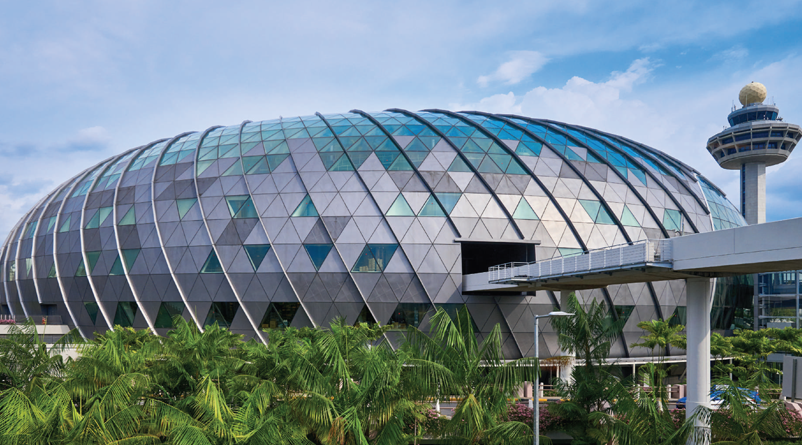When we look at a building, one of the first things we notice is its façade. Façade design is not just about how a building looks; it also reflects its purpose and character. A unique façade can transform an ordinary structure into something extraordinary. In this blog, we will explore the essential elements of façade design, including architectural features, materials, and modern trends, all while keeping things simple and easy to understand.
What is Façade Design?
Façade design refers to the way the front or outer side of a building is created. It includes various components such as materials, colors, shapes, and even how the building interacts with light. A well-designed façade can make a building look inviting, modern, or even historic, depending on the vision of the designer.
Why is Façade Design Important?
- First Impressions: Just like meeting someone, the appearance of a building creates an immediate impression. A beautiful façade can draw people in and spark their interest.
- Energy Efficiency: The right design can help regulate temperatures inside a building, saving energy and reducing costs.
- Structural Integrity: A good façade design ensures that the building is not only appealing but also strong and durable.
- Cultural Significance: A building’s façade can reflect the culture and history of its location, making it a vital part of a community.
Key Elements of Unique Façade Design
To create a unique and effective façade, there are several key elements to consider:
1. Architectural Façade
The architectural façade is the face of the building, and it plays a crucial role in defining its identity. This can include elements like:
- Windows and Doors: Their size and placement can impact both the look and functionality of the building.
- Balconies and Overhangs: These features can add visual interest and help protect the building from the elements.
2. Façade Engineering
Façade engineering focuses on the technical aspects of designing a building’s exterior. This includes ensuring that the façade is strong enough to withstand weather conditions and loads. Engineers work closely with architects to ensure that the design not only looks good but also maintains structural integrity.
3. Façade Materials
The materials used in Façade Design can drastically change the appearance and functionality of a building. Some popular materials include:
- Aluminium Cladding Façade: This lightweight and durable option provides a sleek and modern look. It’s resistant to corrosion and can be easily shaped to fit various designs.
- Aluminum Composite Sheet: These sheets are made from two layers of aluminum with a core material in between. They offer a smooth finish and are often used for their excellent insulation properties.
- ACM Panels: ACM stands for Aluminum Composite Material. These panels are strong and versatile, available in different colors and finishes, making them perfect for creative façade designs.
4. Modern Façade Design Trends
Today, many architects are embracing innovative trends in façade design. Some of these include:
- Sustainable Practices: Using eco-friendly materials and designs that minimize environmental impact is becoming more common. This includes using recycled materials and designing for energy efficiency.
- Smart Facades: Technology is now playing a role in façade design. Smart windows that can adjust based on sunlight can improve energy efficiency and comfort.
Façade Systems
One important aspect of façade design is the system used to support it. One popular system is the curtain wall.
Curtain Walls
A curtain wall is a thin, lightweight façade that is not load-bearing. It hangs from the building’s structural frame and can be made of glass, metal, or other materials. Curtain walls allow for large windows, making buildings look modern and bright.
The Impact of Façade Aesthetics
The way a building looks can significantly affect public perception. A well-designed façade can create a positive image for businesses and improve community pride. Here are some ways façade aesthetics influence perception:
- Attraction: Buildings with unique and eye-catching façades can attract more visitors and potential customers.
- Community Identity: Buildings that reflect local culture and history can help foster a sense of belonging among residents.
- Increased Value: A beautiful façade can raise property values in the surrounding area, benefiting homeowners and businesses alike.
Façade Renovation
In urban areas, many buildings may need updates to their façades. Façade renovation can breathe new life into older structures. This process often involves:
- Repairing Damaged Areas: Fixing cracks, peeling paint, or rust to improve appearance and safety.
- Updating Materials: Replacing old materials with modern options like aluminium cladding façades or ACM panels to enhance energy efficiency and aesthetics.
- Enhancing Accessibility: Making sure that entrances are inviting and easy to use for everyone.
Importance of Façade Lighting
Proper lighting can significantly enhance a building’s façade. Façade lighting creates atmosphere and can highlight architectural features. Here are some benefits:
- Nighttime Appeal: Well-lit façades look beautiful at night, attracting attention and interest.
- Safety: Good lighting improves visibility, making areas safer for pedestrians.
- Branding: Businesses can use lighting to showcase their brand and create a unique identity.
Façade Innovation and Performance Analysis
As technology advances, façade design continues to evolve. Façade innovation focuses on developing new materials and systems that improve both functionality and aesthetics.
Façade Performance Analysis
To ensure that a façade meets functional and environmental standards, performance analysis is crucial. This process examines factors like:
- Energy Efficiency: Evaluating how well the façade insulates and conserves energy.
- Durability: Testing how materials hold up against weather conditions over time.
- Maintenance Needs: Understanding how much upkeep the façade will require to stay in good condition.
Conclusion
Transforming your building with unique façade design can have a significant impact on its appearance, functionality, and the surrounding community. By understanding the essential elements of façade design, including architectural features, materials like aluminium cladding façades, aluminum composite sheets, and ACM panels, you can create a structure that is not only beautiful but also practical.
Investing in façade design is an opportunity to make a lasting impression, improve energy efficiency, and enhance the overall appeal of your building. So, whether you are constructing a new building or renovating an existing one, remember that a unique façade can tell a story and connect with the world outside. Embrace innovation, prioritize aesthetics, and enjoy the benefits of a well-designed façade!





